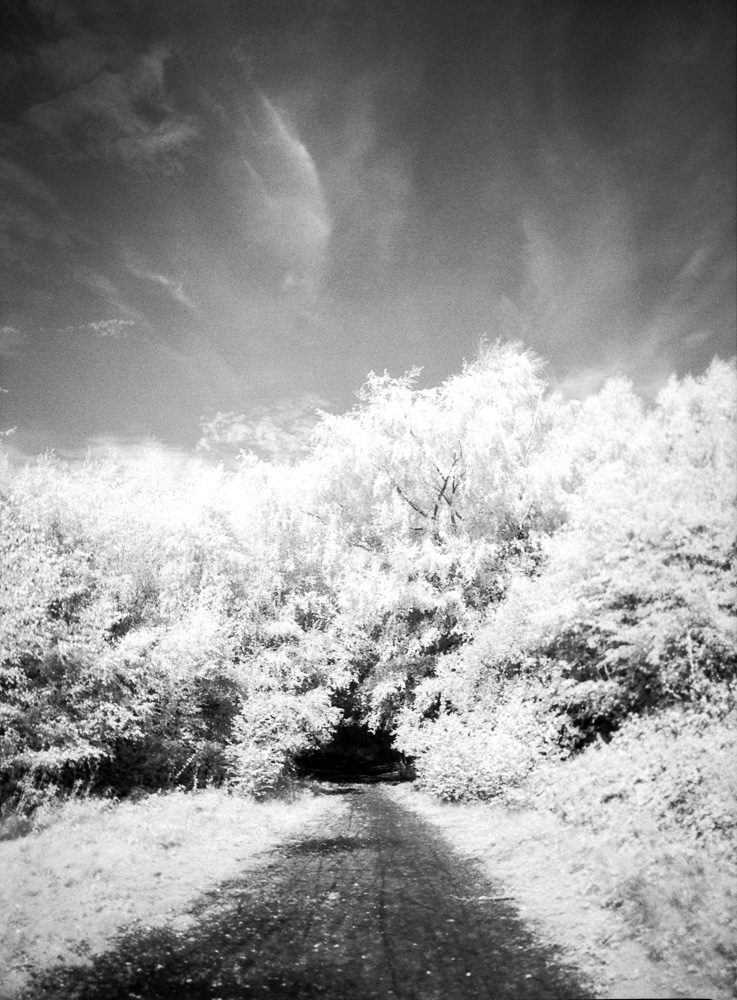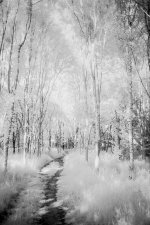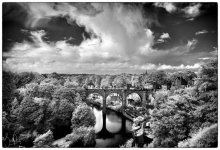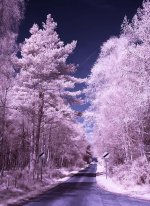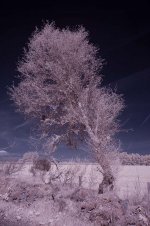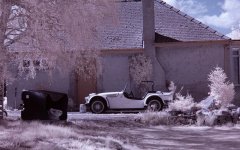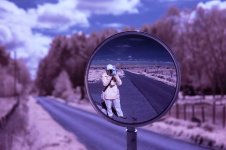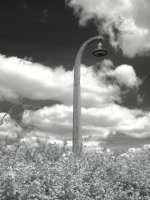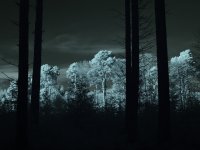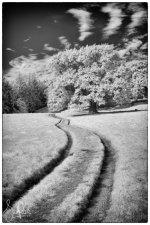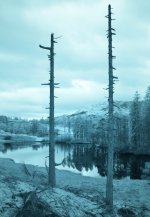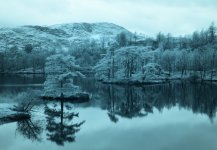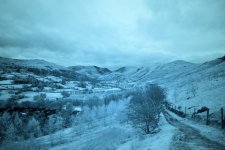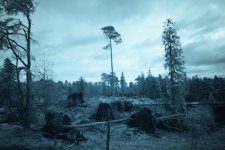You are using an out of date browser. It may not display this or other websites correctly.
You should upgrade or use an alternative browser.
You should upgrade or use an alternative browser.
OK then, let's see YOUR infrared images please.
- Thread starter g8ina
- Start date
- Messages
- 8,324
- Name
- Ian
- Edit My Images
- No
My understanding for this film is that's it's only ASA400 when shot unfiltered, and somewhere between 6 and 25 when shot just in the IR range, dependent on the filter used.
Do you have a source for that?
- Messages
- 1,619
- Name
- David
- Edit My Images
- No
David, I cannot see your images; is it because they are on Flickr? I can see the images others have included. You can see a few of my IR images on my My Website
I have found that while a few people like Mono IR, very few seem to like Colour IR. In fact I have not taken any IR shots for some time no but plan to have another go soon.
I produced an action for PS for channel swapping. The IR Raw images initially can appear reddish and not very neutral but this can be fixed by applying a bespoke profile in import. The profile can be created in Adobe's DNG Profile editor. The problem is that the WB will normally be less than 2000K but LR and ACR have 2000K as their lower limit. The profile from the DNG Profile Editor deals with this. As my IR images are imported they automatically change to neutral. This helps with processing colour and mono post processing. Interesting that you think it is becoming more popular. In the world of Camera Clubs, national and international Salons, I would say it was popular a decade ago. We still see a few mono IR shots but colour has not been popular for many years.
Dave
I have found that while a few people like Mono IR, very few seem to like Colour IR. In fact I have not taken any IR shots for some time no but plan to have another go soon.
I produced an action for PS for channel swapping. The IR Raw images initially can appear reddish and not very neutral but this can be fixed by applying a bespoke profile in import. The profile can be created in Adobe's DNG Profile editor. The problem is that the WB will normally be less than 2000K but LR and ACR have 2000K as their lower limit. The profile from the DNG Profile Editor deals with this. As my IR images are imported they automatically change to neutral. This helps with processing colour and mono post processing. Interesting that you think it is becoming more popular. In the world of Camera Clubs, national and international Salons, I would say it was popular a decade ago. We still see a few mono IR shots but colour has not been popular for many years.
Dave
- Messages
- 1,927
- Edit My Images
- Yes
Sure - Emulsive and Kash Photo both mention it. I'm on my tablet, so I can't add links irritatingly, but I just googled "shooting rollei infrared film".Do you have a source for that?
- Messages
- 8,324
- Name
- Ian
- Edit My Images
- No
My understanding for this film is that's it's only ASA400 when shot unfiltered, and somewhere between 6 and 25 when shot just in the IR range, dependent on the filter used.
Ah. Just read the Emulsive article and the ISO reduction represents the amount of light the filter blocks. I measure the light loss with my digital camera then apply it to film. I still dev as for ISO 400 though, even though (with my filter) it's actually about ISO 0.5
- Messages
- 1,143
- Name
- Mike
- Edit My Images
- Yes
Taking exposure info from one meter/sensor/film to another will never work well for IR. The meters used are not designed for IR.Ah. Just read the Emulsive article and the ISO reduction represents the amount of light the filter blocks. I measure the light loss with my digital camera then apply it to film. I still dev as for ISO 400 though, even though (with my filter) it's actually about ISO 0.5
One of my Pentax DSLRs is hundreds of times more sensitive to IR than another newer model (both unmodified) The proportion of this difference will vary depending on which IR filter I'm using & what the actual spectral lighting is like at that time - the actual amount at 700-800 is not a simple function of the visible & 800-900 might differ again (IR film usually won't be sensitive to this region) while my stock K100d can see through a 950nm filter fairly well and any of my converted bodies see out to >1000nm. My mirrorless cameras differ again.
Even the lens fitted can dramatically change the required exposure for IR - my MFT zooms have a noticeable drop in transmission above 850nm. Most of my other lenses continue to give >90% transmission all the way to 1100nm - the limit the spectrometer at work goes to, and roughly the wavelength silicon becomes transparent to IR.
Fortunately mirrorless cameras tend to meter using the main sensor so there meter readings do work reasonably for shooting IR which means they're fairly accurate metering whatever is seen whether the sensor is converted or not.
DSLRs on the other hand usually meter from a different sensor & even after conversion can have a huge difference in metering. I typically needed an extra 5 stops above the metered result when shooting IR on my stock K100d
There are good reasons why all my older books on IR photography stress the need to bracket exposures widely. With digital at least we have the ability to review images instantly & alter exposures based on that.
- Messages
- 1,927
- Edit My Images
- Yes
HC for 7:00 at 20°C appears to have done the trick. Negatives look a little thin and underexposed, but the rebates are spot on. I'll scan them when they're dry and post anything that's half way decent.Anyone with any insight for processing Rollei IR shot at EI25 with a 720nm filter..? I've got Ilfotec HC or DD-X on hand...
- Messages
- 1,927
- Edit My Images
- Yes
HC for 7:00 at 20°C appears to have done the trick. Negatives look a little thin and underexposed, but the rebates are spot on. I'll scan them when they're dry and post anything that's half way decent.
Pretty pleased with these two from Great Basin National Park - we climbed the mountain in the second photo (Wheeler Peak) the next day - 13.065'! Shot on an RSS 6x12F for about 20-30 seconds.

20200715-Great_Basin-RSS6x12F-Rollei_IR-HC (2 of 5) by Alex Morrison, on Flickr

20200715-Great_Basin-RSS6x12F-Rollei_IR-HC (5 of 5) by Alex Morrison, on Flickr
- Messages
- 55
- Name
- David
- Edit My Images
- Yes
A few from today,
 KIlrea6 by David Philpott, on Flickr
KIlrea6 by David Philpott, on Flickr
 Kilrea5 by David Philpott, on Flickr
Kilrea5 by David Philpott, on Flickr
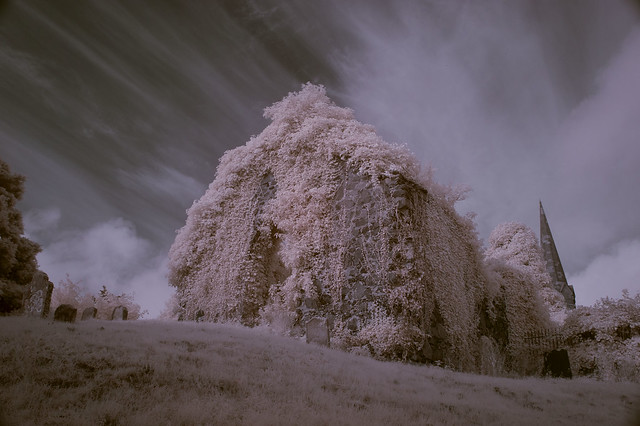 Kilrea4 by David Philpott, on Flickr
Kilrea4 by David Philpott, on Flickr
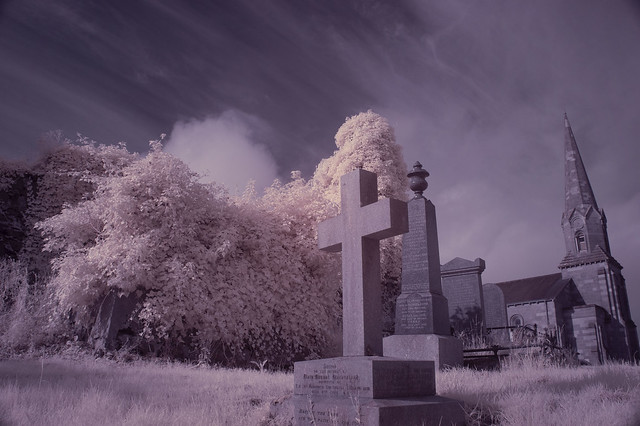 Kilrea3 by David Philpott, on Flickr
Kilrea3 by David Philpott, on Flickr
 KIlrea6 by David Philpott, on Flickr
KIlrea6 by David Philpott, on Flickr Kilrea5 by David Philpott, on Flickr
Kilrea5 by David Philpott, on Flickr Kilrea4 by David Philpott, on Flickr
Kilrea4 by David Philpott, on Flickr Kilrea3 by David Philpott, on Flickr
Kilrea3 by David Philpott, on Flickr- Messages
- 2,411
- Edit My Images
- No
View attachment 292513
Coaley Peak, near Stroud
Taken with a Fuji X-E2 converted to 665nM; Fujinon 23mm f2 lens. Processed in CS6 and Silver FX Pro.
Excellent work
- Messages
- 8,324
- Name
- Ian
- Edit My Images
- No
- Messages
- 1,143
- Name
- Mike
- Edit My Images
- Yes
- Messages
- 385
- Name
- Scott
- Edit My Images
- Yes
Anyone shooting with a full spectrum converted mirrorless and using it for ALL your photography, including normal colour?
Would love to go down to a single body, mirrorless seems like the right way to go (no need to worry about not being able to use the viewfinder with filters on) and ideally want to go with a high end camera - a Nikon Z7II ideally, but,.... well it feels like a bit of an experiment at the moment, and that would make it an extremely expensive experiment! Want to understand if there are any downsides that make a single body for everything impractical, or whether it really is the do-it-all-no-downsides option it should be!
and a pic too - bonus!
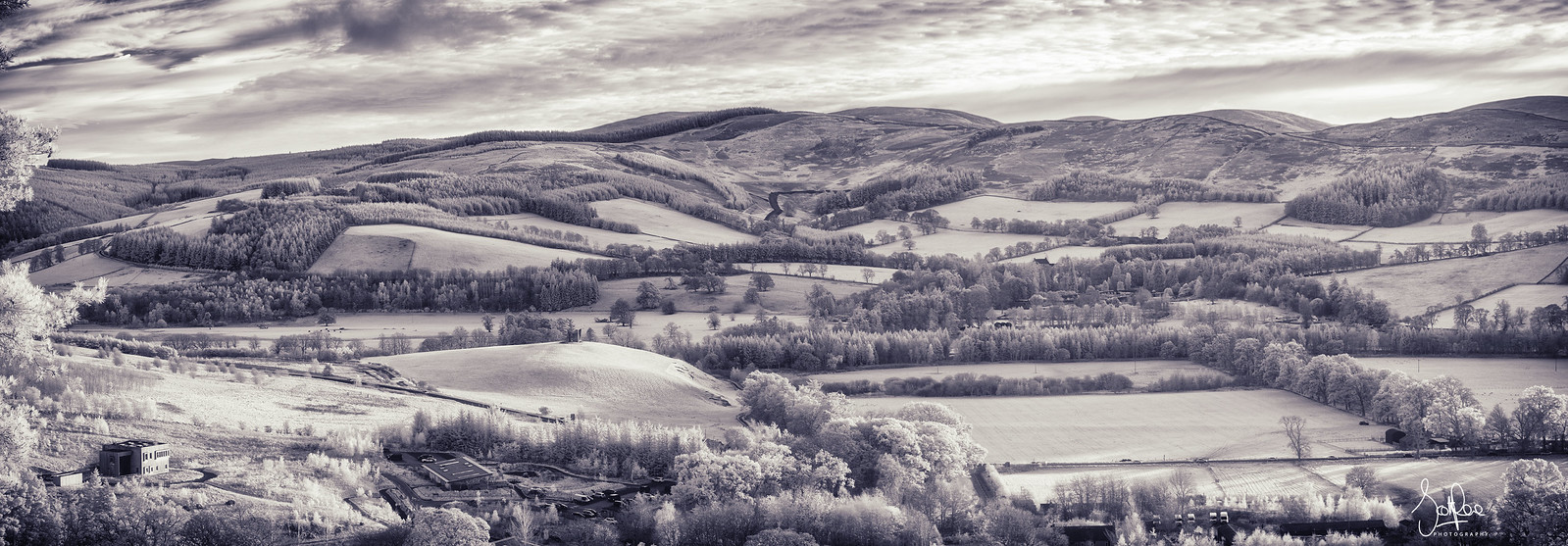 Horsbrugh & Eshiels by Scott Rae, on Flickr
Horsbrugh & Eshiels by Scott Rae, on Flickr
Would love to go down to a single body, mirrorless seems like the right way to go (no need to worry about not being able to use the viewfinder with filters on) and ideally want to go with a high end camera - a Nikon Z7II ideally, but,.... well it feels like a bit of an experiment at the moment, and that would make it an extremely expensive experiment! Want to understand if there are any downsides that make a single body for everything impractical, or whether it really is the do-it-all-no-downsides option it should be!
and a pic too - bonus!
 Horsbrugh & Eshiels by Scott Rae, on Flickr
Horsbrugh & Eshiels by Scott Rae, on Flickr
Last edited:
- Messages
- 8,324
- Name
- Ian
- Edit My Images
- No
Anyone shooting with a full spectrum converted mirrorless and using it for ALL your photography, including normal colour?
Would love to go down to a single body, mirrorless seems like the right way to go (no need to worry about not being able to use the viewfinder with filters on) and ideally want to go with a high end camera - a Nikon Z7II ideally, but,.... well it feels like a bit of an experiment at the moment, and that would make it an extremely expensive experiment! Want to understand if there are any downsides that make a single body for everything impractical, or whether it really is the do-it-all-no-downsides option it should be!
IMO filters would make it a pain. Assuming you have a collection of different sized lenses, you'd either need a Lee system (or similar) which is a faff, or circular filters at different sizes. You can guarantee that you won't have the filter thread for the lens you want to use. Of course if you're a 1 lens kinda person then that's much less of an issue. But if you want to use things like grads for landscape, or polarisers, you're stacking filters. If you've evern tried to unscrew 2 filters attached to each other... :sigh:
For digital, I use Fuji-X, and have a converted X-T1 for IR and an X-T2 for regular. It really is so much more convenient. But I don't shoot astro and I'm not bothered for UV. And if I was updating my kit to shoot IR again, I'd just get 2 bodies.
Just my tuppence etc. Your mileage may vary.
- Messages
- 1,143
- Name
- Mike
- Edit My Images
- Yes
Not by any means all, but my A7ii has been full specrtum converted & I use it with a clip in hot mirror most of the time for normal shooting.Anyone shooting with a full spectrum converted mirrorless and using it for ALL your photography, including normal colour?
Would love to go down to a single body, mirrorless seems like the right way to go (no need to worry about not being able to use the viewfinder with filters on) and ideally want to go with a high end camera - a Nikon Z7II ideally, but,.... well it feels like a bit of an experiment at the moment, and that would make it an extremely expensive experiment! Want to understand if there are any downsides that make a single body for everything impractical, or whether it really is the do-it-all-no-downsides option it should be!
and a pic too - bonus!
Horsbrugh & Eshiels by Scott Rae, on Flickr
I've found changing the clip in hot mirror somewhat fiddly so have shot less IR while carrying this. Previously I used a converted MFT camera & carried a second unconverted one for normal shots.
- Messages
- 385
- Name
- Scott
- Edit My Images
- Yes
yep - fair point @Harlequin565 ! Thanks! In the dim and distant past, my largest lens had a 77mm filter thread, so I bought a 77mm Hoya filter and step up rings for my other lenses - worked a treat. Pretty sure I just chucked the Lee system on top, but yep, see your point about filters getting stuck together - been there, especially with circular polarisers! and in this case I'd have to buy filters at (at least) 82mm if I didn't just use the adapter for my existing lenses. The magnetic systems look interesting, but whether I'd get a full set of IR filters that would work with that, who knows...
I've seen filter systems that will clip over the sensor - so inside the body - which could get around this problem. Still need a filter for every occasion, but maybe a bit smaller (and fiddlier)
@Petrochemist aha, yes, these are the clip in filters I've heard about! Ah, ok, maybe they're fiddlier than I'm thinking. Yeh, this is my issue - I carry a pretty weighty D810 for colour, and a slightly less weighty D7100 for IR (720nm) and I'm fed up with the weight, and with carrying the 2 cameras. They're both pretty much always carried round my neck. Though yes, it's quick and easy to just swap what I'm using that way.
I've seen filter systems that will clip over the sensor - so inside the body - which could get around this problem. Still need a filter for every occasion, but maybe a bit smaller (and fiddlier)
@Petrochemist aha, yes, these are the clip in filters I've heard about! Ah, ok, maybe they're fiddlier than I'm thinking. Yeh, this is my issue - I carry a pretty weighty D810 for colour, and a slightly less weighty D7100 for IR (720nm) and I'm fed up with the weight, and with carrying the 2 cameras. They're both pretty much always carried round my neck. Though yes, it's quick and easy to just swap what I'm using that way.
- Messages
- 8,324
- Name
- Ian
- Edit My Images
- No
these are the clip in filters I've heard about!
Again, depending on the sort of photography you're doing I wouldn't want to be changing one of these in the field. At home - yes, but that then reduces your flexibility when out and about. It all depends on your subjects and flexibility requirements. I've always carried 2 bodies - especially in Autumn because the colours are lovely, and IR can be lovely too.
Good luck with whatever you decide!
- Messages
- 385
- Name
- Scott
- Edit My Images
- Yes
I think you both talked me out of it!  I think the question now is, update the colour body first or upgrade the IR body first (and sub question - go full spectrum or not?). Thanks for the guidance!
I think the question now is, update the colour body first or upgrade the IR body first (and sub question - go full spectrum or not?). Thanks for the guidance! 
- Messages
- 385
- Name
- Scott
- Edit My Images
- Yes
 Winter Rain by Scott Rae, on Flickr
Winter Rain by Scott Rae, on FlickrBought a Z5 for full spectrum conversion, and a Z7 for colour. I think I might have gone a bit OTT with the Z7, and maybe I'll even regret not getting the Z7II, but felt if I was going part way on the mirrorless journey, I might as well go all in! Will send the Z5 off for conversion in the new year
- Messages
- 8,324
- Name
- Ian
- Edit My Images
- No
Diafine to the rescue! I bought some HIE off eBay in an "unknown" state and it has finally delivered what I've been after pretty much straight out of the box with just a red filter. Shot at 100 with TTL metering with the red filter. Using Diafine meant not having to worry so much and/or bracket. 14 keepers out of the roll is the best I've done ever with a roll of film - never mind infra-red.




- Messages
- 2,124
- Name
- Kevin
- Edit My Images
- No
More infrared film from me, this time Rollei IR400 in a Yashicamat 124G with a Hoya R72 filter:

Bolam Lake infrared by Kevin Allan, on Flickr

Bolam Lake infrared by Kevin Allan, on Flickr
- Messages
- 8,324
- Name
- Ian
- Edit My Images
- No
- Messages
- 8,324
- Name
- Ian
- Edit My Images
- No
- Messages
- 2,124
- Name
- Kevin
- Edit My Images
- No
Intrepid 4x5 camera fitted with a Horseman 6x12 film back, Rollei IR 400 film and an R72 filter.

River Wansbeck at Bothal by Kevin Allan, on Flickr

Bothal churchyard infrared by Kevin Allan, on Flickr

River Wansbeck at Bothal by Kevin Allan, on Flickr

Bothal churchyard infrared by Kevin Allan, on Flickr
- Messages
- 1,143
- Name
- Mike
- Edit My Images
- Yes
With someone standing on the footbridge it could make a interesting feature. IMONice pair, shame about the footbridge is it in the first?
- Messages
- 385
- Name
- Scott
- Edit My Images
- Yes
Peter B
Double Numpty
- Messages
- 5,970
- Name
- Peter
- Edit My Images
- Yes
Baloo
Pleurodelinae and proud
- Messages
- 4,212
- Name
- Roger
- Edit My Images
- Yes
Thought we might have a thread for IR shots, please feel free to post.
[url=https://flic.kr/p/2nMvMKq]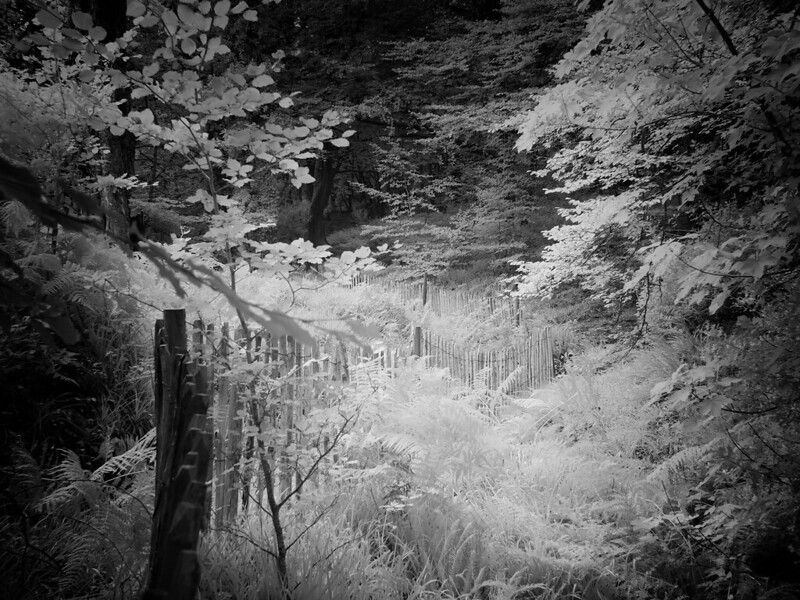

[URL='https://www.talkphotography.co.uk/forums/photos-creative-photography.112/[url=https://flic.kr/p/2nMVbUH][img]https://live.staticflickr.com/65535/52371804625_77aa6f8a33_c.jpg[/img][/url][url=https://flic.kr/p/2nMVbUH]Out%20and%20about%20in%20IR-1-2[/url]%20by%20[url=https://www.flickr.com/photos/165177093@N04/]R%20Hillman[/url],%20on%20Flickr'][url=https://flic.kr/p/2nMVbUH] [
[
[url=https://flic.kr/p/2nMvMKq]


[URL='https://www.talkphotography.co.uk/forums/photos-creative-photography.112/[url=https://flic.kr/p/2nMVbUH][img]https://live.staticflickr.com/65535/52371804625_77aa6f8a33_c.jpg[/img][/url][url=https://flic.kr/p/2nMVbUH]Out%20and%20about%20in%20IR-1-2[/url]%20by%20[url=https://www.flickr.com/photos/165177093@N04/]R%20Hillman[/url],%20on%20Flickr'][url=https://flic.kr/p/2nMVbUH]
 [
[- Messages
- 1,563
- Name
- Jamie
- Edit My Images
- Yes
First shot with an IR camera, using a less than ideal cheapo lens...
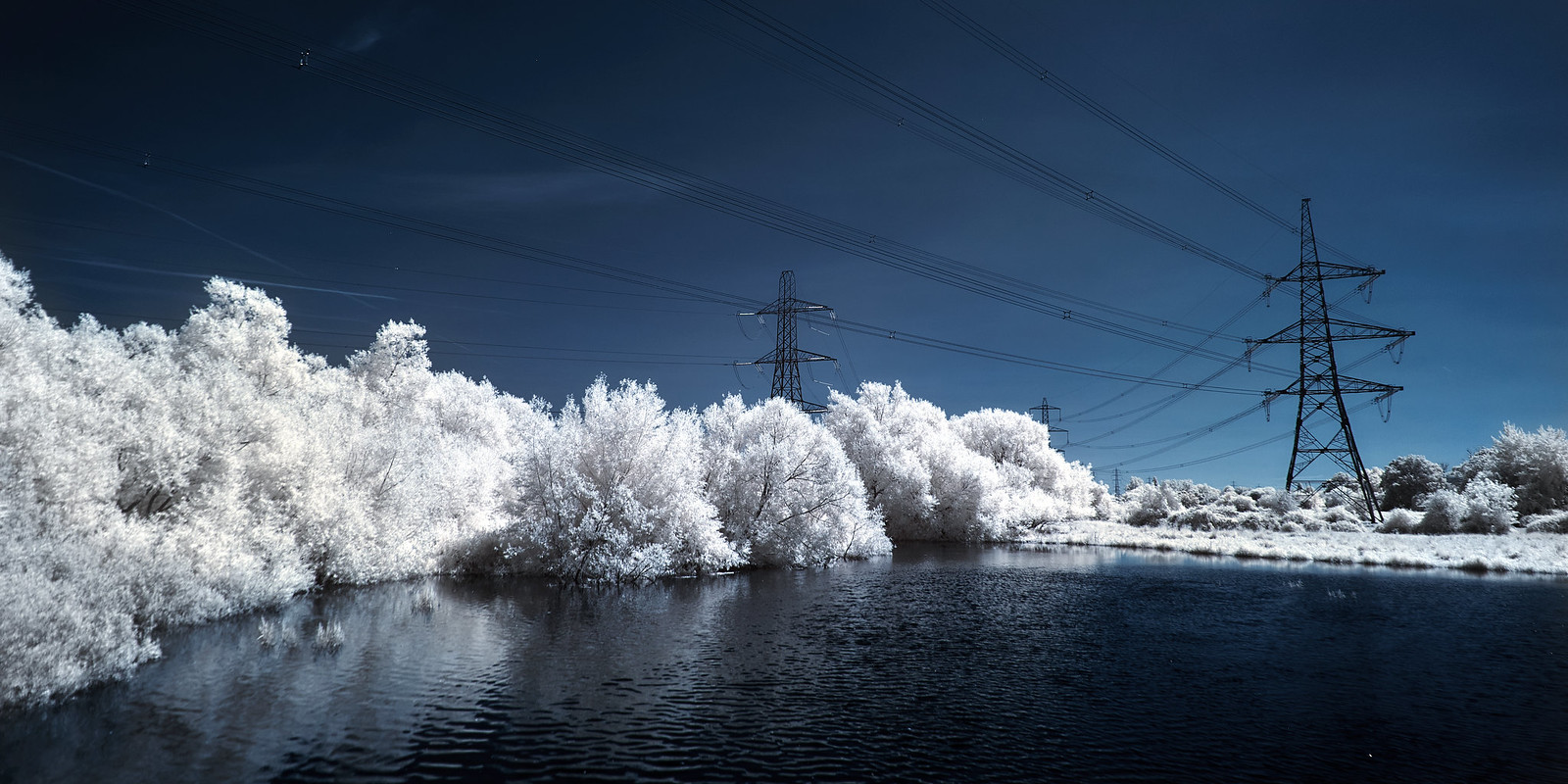 Infrared Test by jimmyjamjoejoe, on Flickr
Infrared Test by jimmyjamjoejoe, on Flickr
 Infrared Test by jimmyjamjoejoe, on Flickr
Infrared Test by jimmyjamjoejoe, on FlickrBaloo
Pleurodelinae and proud
- Messages
- 4,212
- Name
- Roger
- Edit My Images
- Yes
That is a cracking first shot,First shot with an IR camera, using a less than ideal cheapo lens...
Infrared Test by jimmyjamjoejoe, on Flickr
- Messages
- 8,324
- Name
- Ian
- Edit My Images
- No
There is another thread here with a similar title that's got quite a bit of useful information in it if anyone is interested: https://www.talkphotography.co.uk/threads/ok-then-lets-see-your-infrared-images-please.493937/
1. Sister in law walking away from a rainbow. Seaton sluice park, NE. I really like Nikon's Charcoal picture control.
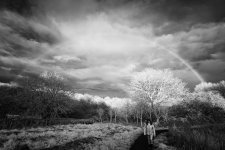
2. Blaise castle folly in Bristol. Scots pines look great in IR.
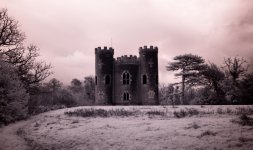
3. Same place on a cloudy day using a D100 + a cheap 720 filter rather than a converted camera. There is another rainbow among the noise.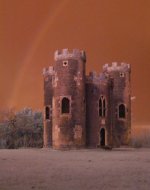
4. Magical feeling spot at Shaftoe Craggs, NE.
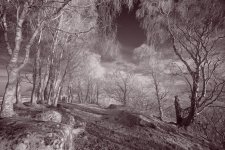
5. Looking out over Shaftoe Craggs, NE.
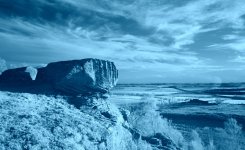

2. Blaise castle folly in Bristol. Scots pines look great in IR.

3. Same place on a cloudy day using a D100 + a cheap 720 filter rather than a converted camera. There is another rainbow among the noise.

4. Magical feeling spot at Shaftoe Craggs, NE.

5. Looking out over Shaftoe Craggs, NE.

Baloo
Pleurodelinae and proud
- Messages
- 4,212
- Name
- Roger
- Edit My Images
- Yes
Would be good to add this into other thread, my mistake when I started this thread.There is another thread here with a similar title that's got quite a bit of useful information in it if anyone is interested: https://www.talkphotography.co.uk/threads/ok-then-lets-see-your-infrared-images-please.493937/
- Messages
- 385
- Name
- Scott
- Edit My Images
- Yes



